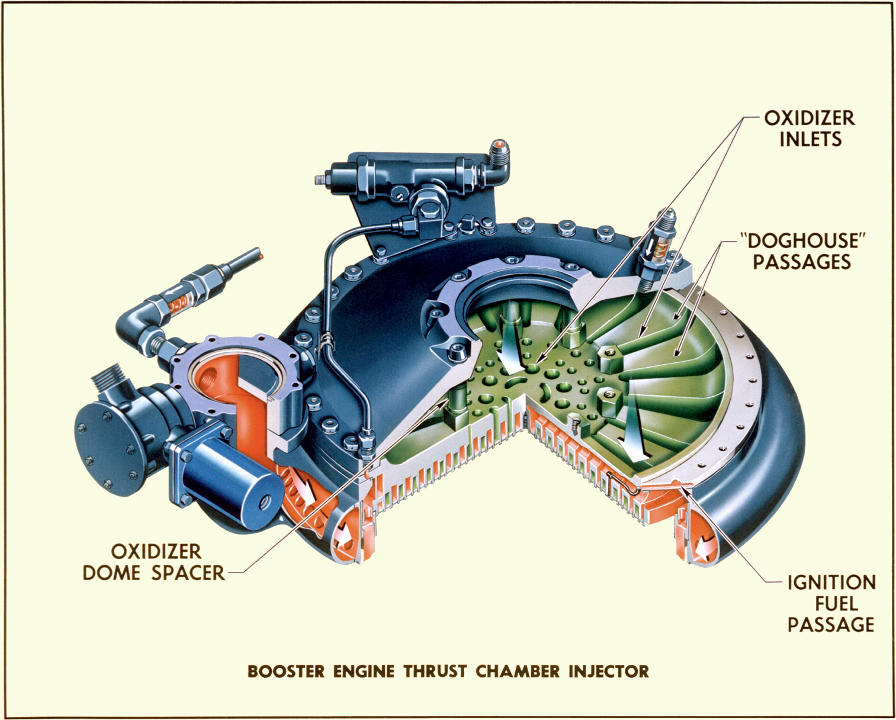LR-89 (Atlas Booster) Rocket Engine Injector
The Atlas missile sported three rocket engines, two outer booster (LR-89) engines and one central LR-105 sustainer engine.
The Atlas employed a "stage and a half" concept, with both boosters and the sustainer igniting at lift-off. A bit over two minutes later, the booster engines would shut down and be jettisoned along with the missile boattail, leaving the sustainer engine to propel the missile to its final velocity. (At the time, it was difficult enough to reliably ignite a stationary rocket engine on the ground, much less air-start an engine at velocity.)
Here is a cut-away diagram of the LR-89 booster engine's injector (which, other than size, bears a strong resemblance to the F-1 rocket engine's injector).
Click image for a 3600x2880 pixel version of this image in a new window.
Scan by GRC
ImageNet.
Restoration by heroicrelics.
As is typical of rocket engine diagrams from this era, red signifies fuel flow and green indicates an oxidizer path.
After leaving the turbopump, fuel enters the fuel inlet manifold via the fuel inlet (at left), where it is directed down every other regenerative cooling tube comprising the thrust chamber (the forward end of these tubes are visible inside the fuel inlet manifold).
The fuel reaches the thrust chamber exit plane, where it enters the fuel return manifold and returns to the fuel manifold at the forward end of the thrust chamber via the "up fuel" tubes. The fuel then flows through fuel feed passages (red passage running from the center of the injector to the 4:00 position) to the ring grooves comprising the injector, and out the orifices on the injector face.
The liquid oxygen takes a more direct route to the injector, entering the LOX dome via the inlet at center. From there, the LOX is distributed to the ring grooves and then out the orifices on the injector face.
Like the F-1 injector, the LR-89 has a hypergol cartridge (at top) to provide initial ignition. When fuel pressure reaches a sufficiently high level, the pressure bursts a diaphragm in the cartridge, releasing the hypergolic fluid into the ignition fuel passage and then through hypergol feed lines mounted in the fuel feed passages to igniter fuel housings in the face of the injector.

